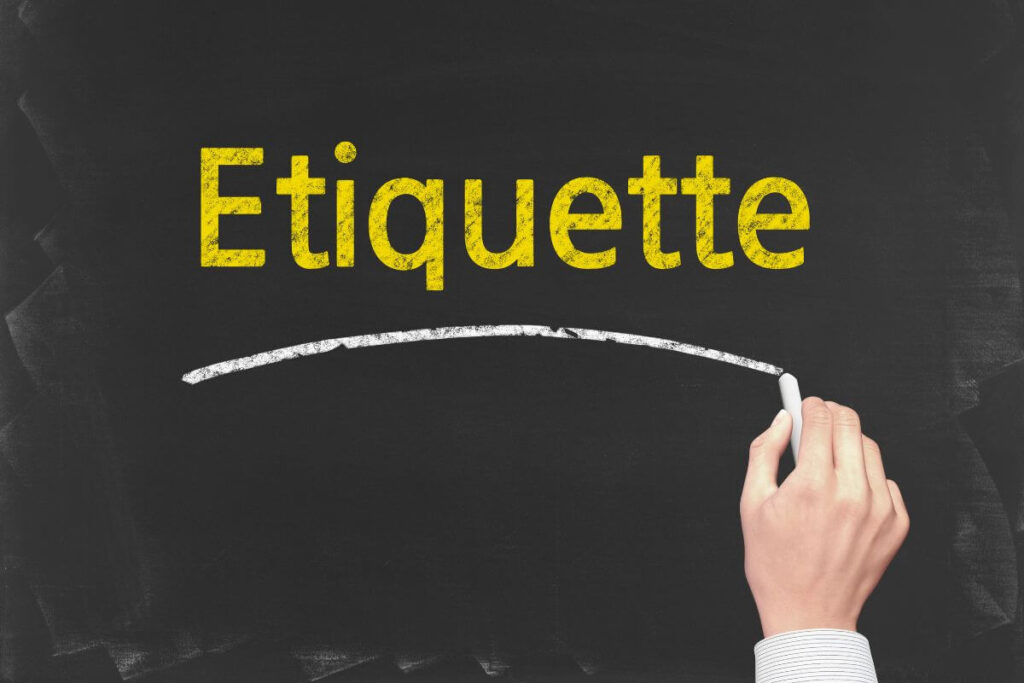The term “etiquette” can bring to mind images of an overly regimented code of behavior. Following good etiquette ensures that everyone on the course enjoys their round. There are two key areas of etiquette: how to look after the course and behavior on the course.
Table of Contents
Looking after the course
You must ensure that your impact on the course is minimal. While you will not usually take a divot on par-4 or par-5 tees, if you take a divot on a par-3 tee, use the sand-and-soil mix provided to fifill the divot mark. If there is no sand-and-soil mix, simply place the divot back in its hole.
Always replace divots
A divot that is immediately placed back in its hole soon repairs itself. But if a divot is not replaced, it leaves an ugly scar, making the course look scrappy, and it is harder for the greenkeeper to repair the divot mark.
Therefore, before leaving the scene of every fairway shot, place the divot back in its hole, and tap it down fifirmly with the sole of your shoe.
Leave no trace in the sand
Once you have played your bunker shot, use the rake provided to smooth the sand. If there is no rake, use the back of your sand wedge. Cover your footprints and the trough left by the clubhead.
Repair pitch marks
Pitch marks on the green are unsightly and can deflflect a ball on its way to the hole. Not every shot played on to a green will leave a pitch mark, but those that do should be repaired the moment you set foot on the green.
You can use a pitch mark repairer, which is designed specififically for the job, or alternatively a wooden tee will suffice (the plastic ones bend).
The procedure is simple and takes only a few seconds. Stick the pointed end of your tee, or the fork of your pitch mark repairer, into the ground and gently ease the turf up. This will level the indentation. The pitch mark will then “heal” within 24 hours, whereas an untended pitch mark can take weeks to recover completely.
A green dotted with pitch marks is no fun to putt on.
Be careful with the flag
Do not throw the flflag across the green, since it damages the putting surface. Lower it gently to the ground. If you hit a putt and the ball strikes a flflag lying on the green, you receive a two-shot penalty. Ideally, place it on the apron of the green.
How to behave on the course
While looking after the course is an essential requirement of good etiquette, your on-course behavior is equally important. Inconsiderate conduct during a round can take the shine off even the sunniest of days. However, if you adhere to the advice given below, you will not be guilty of ruining other players’ enjoyment.
Wait Your Turn
Honor on the tee—who plays fifirst—is secured by the golfer with the lowest score on the previous hole. On the first tee, honor is decided by lots or the toss of a coin. Elsewhere on the hole, the golfer farthest from the hole plays first. In a strokeplay event you can elect to continue to putt out after your initial approach putt.
Out Of Sight, Out Of Mind
Stand 45 degrees behind and to the right of the golfer; and four or fifive paces away. Do not talk or practice swings.
Be a Good Timekeeper
If you fear your ball might be lost, play a provisional ball. Then, if the original ball is lost, you do not have to walk back to the site of the stroke. If the ball you feared lost is not sighted, and there is a group behind you, call them through.
If your ball disappears into the rough, watch where it comes to rest and “spot mark” it with a distinguishing feature, such as a tree that is along the same line.
On the green, before you begin putting, leave your golf bag on the side of the green closest to the next tee, to collect it on your way to the next hole.
Do not mark your card on the green, since this can hold up the players behind you. Instead, it is better to do this on the next tee while waiting your turn to play.
Always Shout “Fore!”
If you hit a wayward shot that you think might endanger others, shout “fore!” loudly and without hesitation.
Be Careful Where You Step
On the green, be aware of where your playing partners’ balls have come to rest and avoid stepping on the line of their putts.
On a soft putting surface your feet can leave marks as these may affect the smooth roll of a ball. Even on a fifirm green it is courteous to avoid stepping on the line of another golfer’s putt.



